Section 2
How the information concerning the invisible disability should
de release in the company?
Question 1: Formally or Informally?
Question 2: By the person or by somebody else?
Question 3: Transmitted to the colleagues or only to the
manager?
Question 4: Only to the HR manager or to the whole company?
Question 5: Face-to-face or electronically?
APPENDIX B. Knowledge about invisible
disability
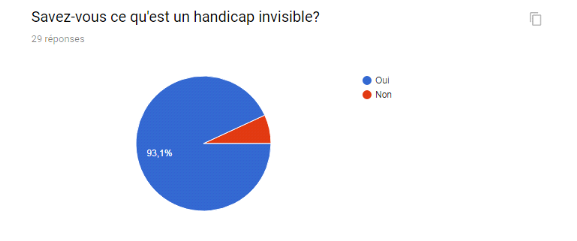
93,1% of respondents claim that they know what an invisible
disability is.
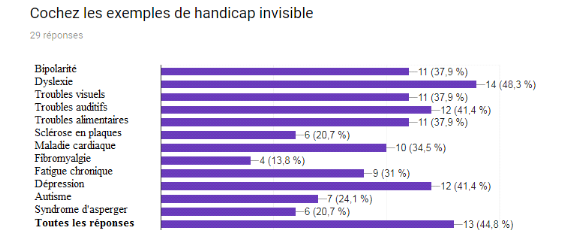
Only 44,8% of respondents think that all the answers were
actual invisible disabilities. The list is not exhaustive but all of the
answers are actual invisible disabilities.
APPENDIX C.The influence of invisible disability on
the recruitment process
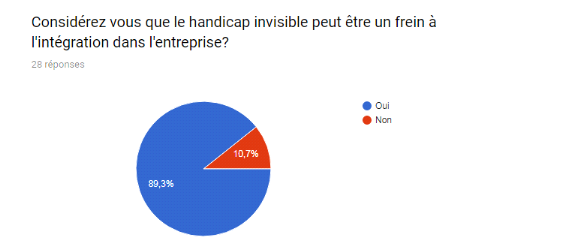
89,3 % of respondents think that an invisible disability can
be an hindrance to the corporate integration.

24,1% of respondents think that people living with an
invisible disability must not talk about it during the process of
recruitment.
APPENDIX D. When is the best moment to talk about
invisible disability?
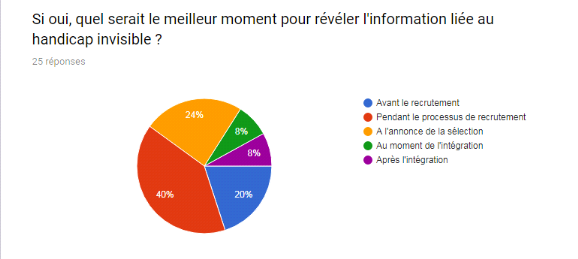
40% of respondents argue that it is better to talk about it
during the process of recruitment, 24% think that the best moment is when the
candidate is selected for the job and 20% think as the French law does, that
the best moment is before the process of recruitment, on the CV for example.
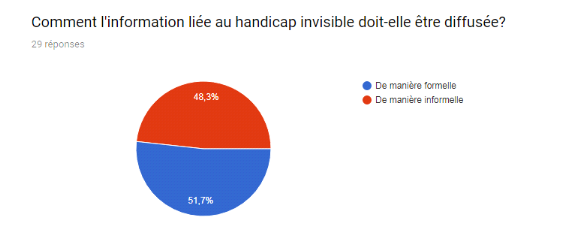
APPENDIX E. We try to define the best way to talk
about the disability from the moment the person is hired in the
company.
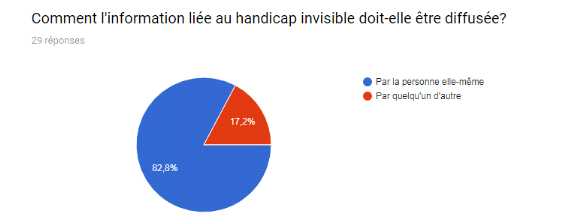
48,3% of respondents think that the information linked to the
invisible disability should be revealed formally while 51,7% think that the
information should be shared informally. There is no clear separation because
it depends on the disability itself and on the consequences on the job.
It is clear that it is the person concerned by the disability
who must talk about it. 82,8% of the respondents think this way.
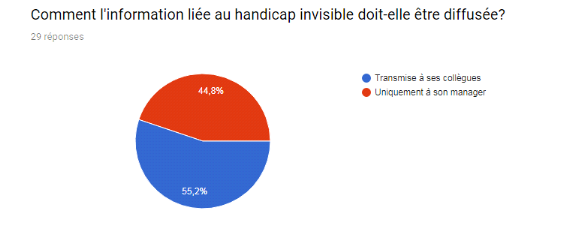
44,8% of respondents think that the information should be
shared only with the manager whereas 55,2% of respondents claim that the
colleagues should be informed as well. It also depends on the disability and if
the job is independent or if the person will work in team.

It is obvious that the information should not be public within
the company, 69% of respondents think that the HR manager should be aware that
one member on the team is living with an invisible disability. It is more
relevant and more respectful to the person.
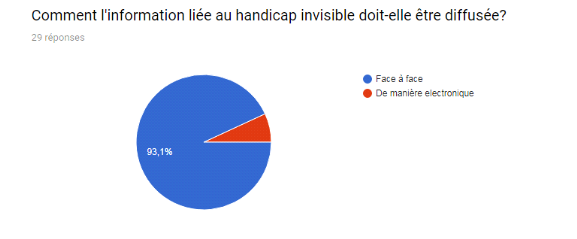
As the information linked to the invisible disability is
really sensitive, 93,1% of respondents think that the information have to be
discussed face-to-face and not electronically.
APPENDIX F. Interviews with experts
|
Name
|
Age
|
Function
|
Company
|
|
Nathalie
|
30's
|
Physiotherapist
|
Independant
|
|
Severine
|
40's
|
Regional Delegate
|
Agefiph
|
|
Pete
|
40's
|
Consultant
|
Justdifferent
|
Main contributions:
Nathalie: Revealing the information about invisible disability
after the candidate is selected is a way to avoid both positive and negative
discriminations.
Severine: Talking openly about disabilities is a way to
sensitize as much people as possible.
Pete: Focusing on the personality is more important than
focusing on the dis-ability.
| 


